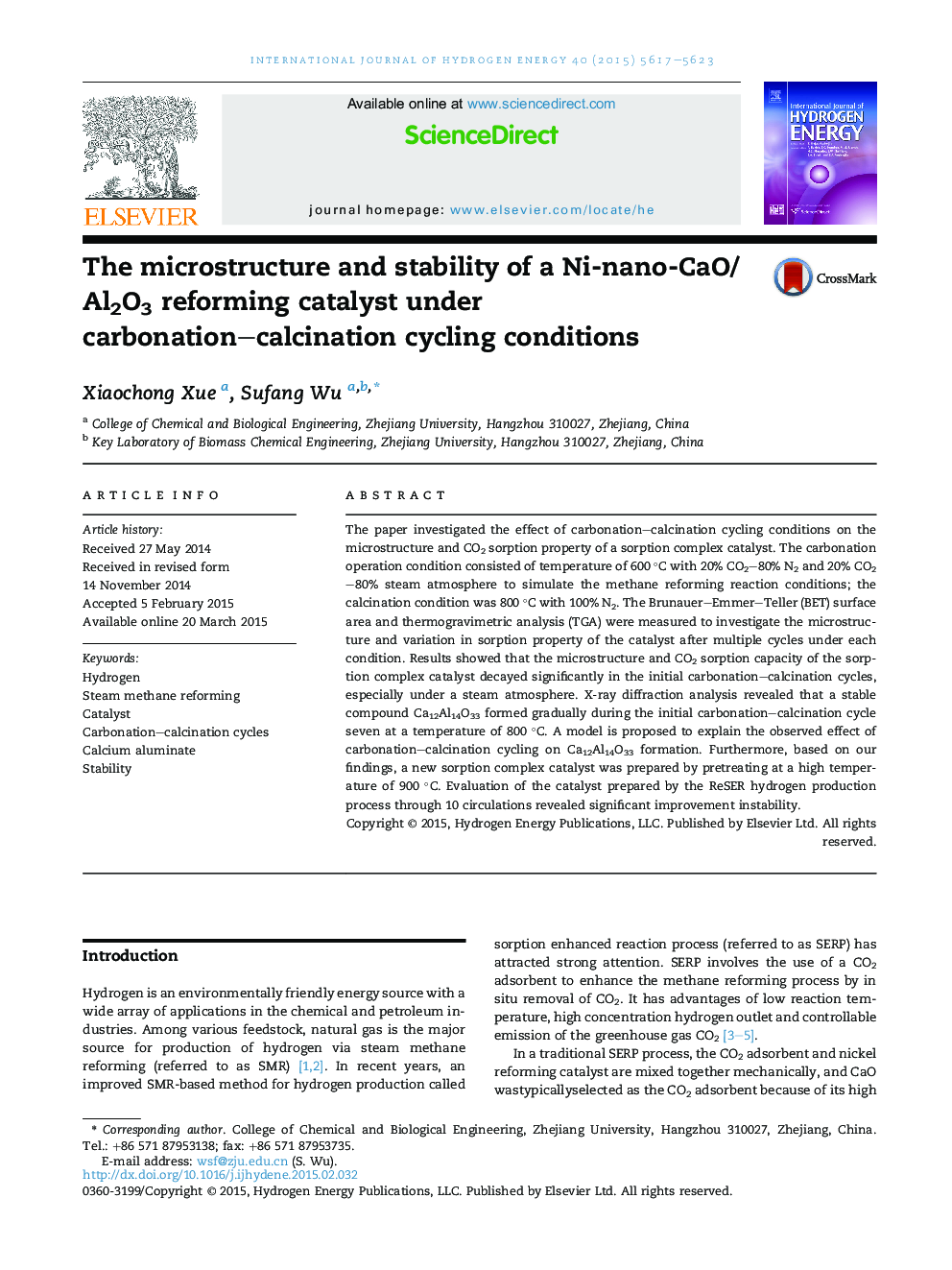| Article ID | Journal | Published Year | Pages | File Type |
|---|---|---|---|---|
| 1275615 | International Journal of Hydrogen Energy | 2015 | 7 Pages |
•Carbonation–calcination cyclic conditions can affect the reforming catalyst.•Evidence for formation of Ca12Al14O33 under 800 °C via multiple cycles was found.•A putative mechanism for formation of Ca12Al14O33 is proposed.•Based on our findings, a new catalyst with enhanced stability was prepared by ReSER.
The paper investigated the effect of carbonation–calcination cycling conditions on the microstructure and CO2 sorption property of a sorption complex catalyst. The carbonation operation condition consisted of temperature of 600 °C with 20% CO2–80% N2 and 20% CO2–80% steam atmosphere to simulate the methane reforming reaction conditions; the calcination condition was 800 °C with 100% N2. The Brunauer–Emmer–Teller (BET) surface area and thermogravimetric analysis (TGA) were measured to investigate the microstructure and variation in sorption property of the catalyst after multiple cycles under each condition. Results showed that the microstructure and CO2 sorption capacity of the sorption complex catalyst decayed significantly in the initial carbonation–calcination cycles, especially under a steam atmosphere. X-ray diffraction analysis revealed that a stable compound Ca12Al14O33 formed gradually during the initial carbonation–calcination cycle seven at a temperature of 800 °C. A model is proposed to explain the observed effect of carbonation–calcination cycling on Ca12Al14O33 formation. Furthermore, based on our findings, a new sorption complex catalyst was prepared by pretreating at a high temperature of 900 °C. Evaluation of the catalyst prepared by the ReSER hydrogen production process through 10 circulations revealed significant improvement instability.
